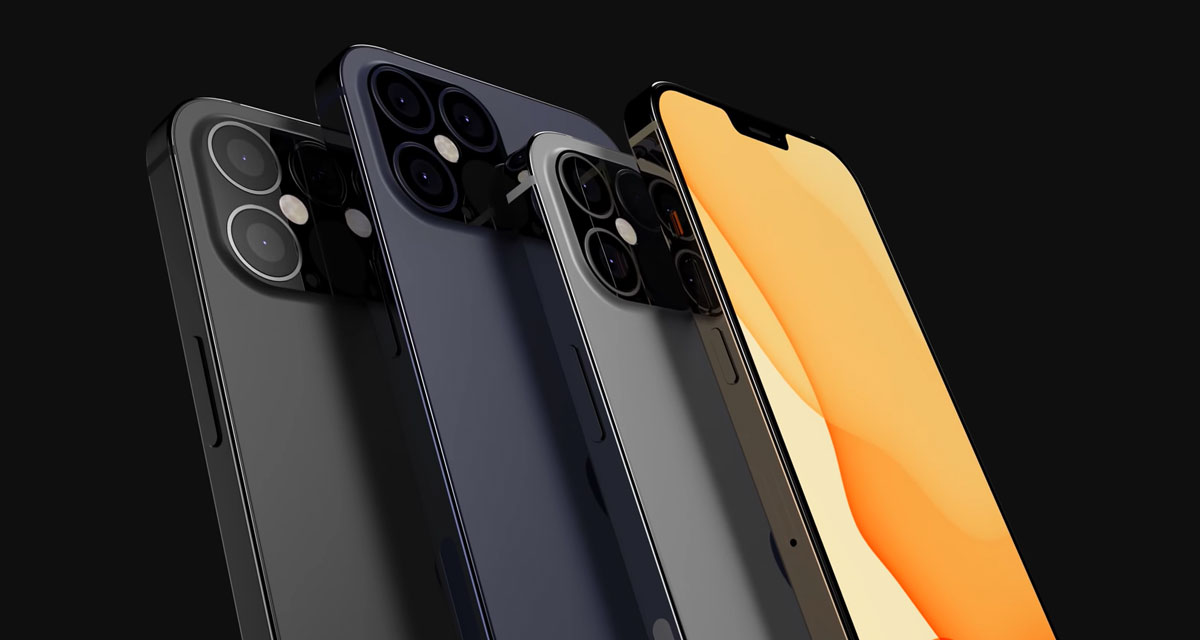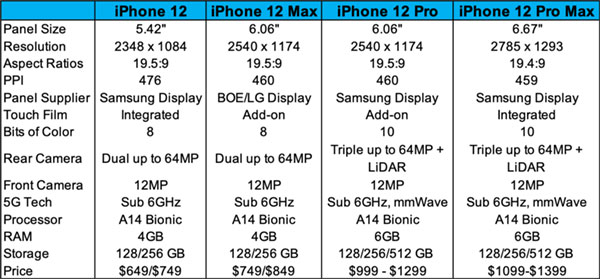Apple is expected to announce the iPhone 12 and iPhone 12 Pro lineup in the final quarter of 2020, and a new report by display analyst Ross Young claims to have all the details about the screens that will go into all four new models.
In a report posted to the Display Supply Chain Consultants website, Young outlined the plans for iPhone 12, iPhone 12 Max, iPhone 12 Pro, and iPhone 12 Pro Max. According to him all four models will be produced by a combination of Samsung Display, LG Display, and BOE.

In fact, all of the new iPhones will carry Samsung Display screens except the iPhone 12 Max that will be a combination of BOE and LG Display. That’s going to come in a 6.1 inches with a resolution of 2540 x 1174.
For the first time ever all four of Apple’s iPhones are expected to feature OLED panels just as rumors have suggested in recent weeks and months. Interestingly though, is the suggestion that the Pro models will feature 10-bits color – which will be a first for smartphones. It doesn’t end here, the report also mentions the use of XDR tech in the displays.
Apple is rumored to be linking XDR (extreme dynamic range) compatibility to the iPhone 12 series. XDR performance on its monitors is specified by Apple as 1000 nits of full screen brightness, 1600 nits of peak brightness, 1M:1 contrast, 10-bits of color and ~100% P3 wide color gamut. To date, Samsung Display has only achieved 1342 nits of peak brightness and full screen brightness of 828 nits on smartphones, so if Apple does use XDR, the XDR specifications for brightness will need to change. Given the lower black levels in its OLED smartphones vs. its XDR monitor, contrast should actually be higher on its smartphones…
Young also shared what he expects to complete the specifications for all four models with Sub-6GHz 5G across the board. The more speedy mmWave 5G will be an iPhone 12 Pro and iPhone 12 Pro Max affair, as will the new LiDAR scanner that will be borrowed from the 2020 iPad Pro.

Interestingly, Young also notes that the production of displays for the new iPhones is already around six weeks behind schedule, potentially pushing a launch into October rather than the usual September window. That’s something that’s been suggested on and off in recent weeks, all thanks to the ongoing coronavirus pandemic and the impact it has had on Apple’s supply chain.
You may also like to check out:
- Download: iOS 13.5 GM IPSW Links, OTA Update Released Along With iPadOS 13.5 GM
- iPhone SE 2 2020 Screen Protector: Here Are The Best You Can Buy Today [List]
- iPhone SE 2 2020 Case: Here Are The Best Ones You Can Get Today [List]
- Kodi 18.6 IPA APK Download For iOS 13 / iPadOS 13, Android Released
- Run Multiple 2 WhatsApp Accounts Number On 1 iPhone The Right Way, Here’s How
- Download: iOS 13.4.1 IPSW Links, OTA Update Released Along With iPadOS 13.4.1 Released
- Jailbreak iPhone 11 Pro Max With Unc0ver 4.0.0 On iOS 13.3 Now
- Checkra1n For Windows Alternative: How To Use Ra1nUSB For iOS 13.3 Jailbreak
- Jailbreak iOS 13.4.1 / iPadOS 13.4.1 Using Checkra1n, Here’s How [Guide]
- Downgrade iOS 13.4.1 To iOS 13.3.1 For Checkra1n Jailbreak, Here’s How
- Apple Watch ECG App Hack: Enable Outside US In Unsupported Country On Series 5 & 4 Without Jailbreak
You can follow us on Twitter, or Instagram, and even like our Facebook page to keep yourself updated on all the latest from Microsoft, Google, Apple, and the Web.

